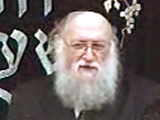Beit Midrash
- Sections
- Chemdat Yamim
- P'ninat Mishpat
- Sections
- The Life of Tzaddikim
- Other Great Leaders
I apologize if this tiny biography will sound like an advertisement, but Rabbi Akiva Eiger was one of the featured gedolim in my book, A Glimpse at Greatness, published by Eretz Hemdah. As I explained there, while Rabbi Akiva Eiger wrote many responsa to rabbis throughout the region, he did not publish prolifically. Perhaps his major work was the compilation of approximately 1,000 responsa, known simply as Sheolot U’teshuvot Rabbi Akiva Eiger, which covers subject matter in all four sections of Shulchan Aruch. Within the smallest group of the four, that corresponding to Choshen Mishpat (monetary law), much of the discussion is on theoretical or text-based matters, rather than judicial case studies, which is what we usually focus on in this column.
Discussions of actual cases were also, for the most part, sent from the rabbis of other cities. Posen, as a prominent and devout Jewish community, had a respected beit din. (The most famous picture of Rabbi Akiva Eiger, which is on the cover of A Glimpse at Greatness, is from a painting of him walking with two dayanim from that beit din). It is not clear to me to what extent Rabbi Akiva Eiger sat regularly as the head of the court. There were cities with enough scholars to make it possible for there to be separate functions of the city’s rabbinate and its rabbinical court. It is also possible that even when being a dayan or otherwise being involved behind the scene, the posek would be careful to not include stories that are too close to home in his works. Additionally, on technical grounds, letters were needed to give information needed for the rabbi sending the question out-of-town, whereas local issues may have been dealt with orally.
In any case, we hope that the 4-5 weeks that we will spend on dinei Torah regarding which Rabbi Akiva Eiger expressed an opinion will be enlightening and informative.

P'ninat Mishpat (802)
Various Rabbis
343 - Putting Pressure on Male Inheritors
344 - Rabbi Akiva Eiger (Introduction)
345 - Agreeing to Not Receive Inheritance from One’s Children
Load More

P'ninat Mishpat: Rental of an Apartment that Was Not Quite Ready – part I
based on ruling 82031 of the Eretz Hemdah-Gazit Rabbinical Courts
Beit Din Eretz Hemda - Gazit | Nisan 5784

P'ninat Mishpat: Rental of an Apartment that Was Not Quite Ready – part II
based on ruling 82031 of the Eretz Hemdah-Gazit Rabbinical Courts
Beit Din Eretz Hemda - Gazit | Iyar 5784

P'ninat Mishpat: Did Any Furniture Go to the Buyer? – part I
based on ruling 84093 of the Eretz Hemdah-Gazit Rabbinical Courts
Beit Din Eretz Hemda - Gazit | Kislev 5786






















